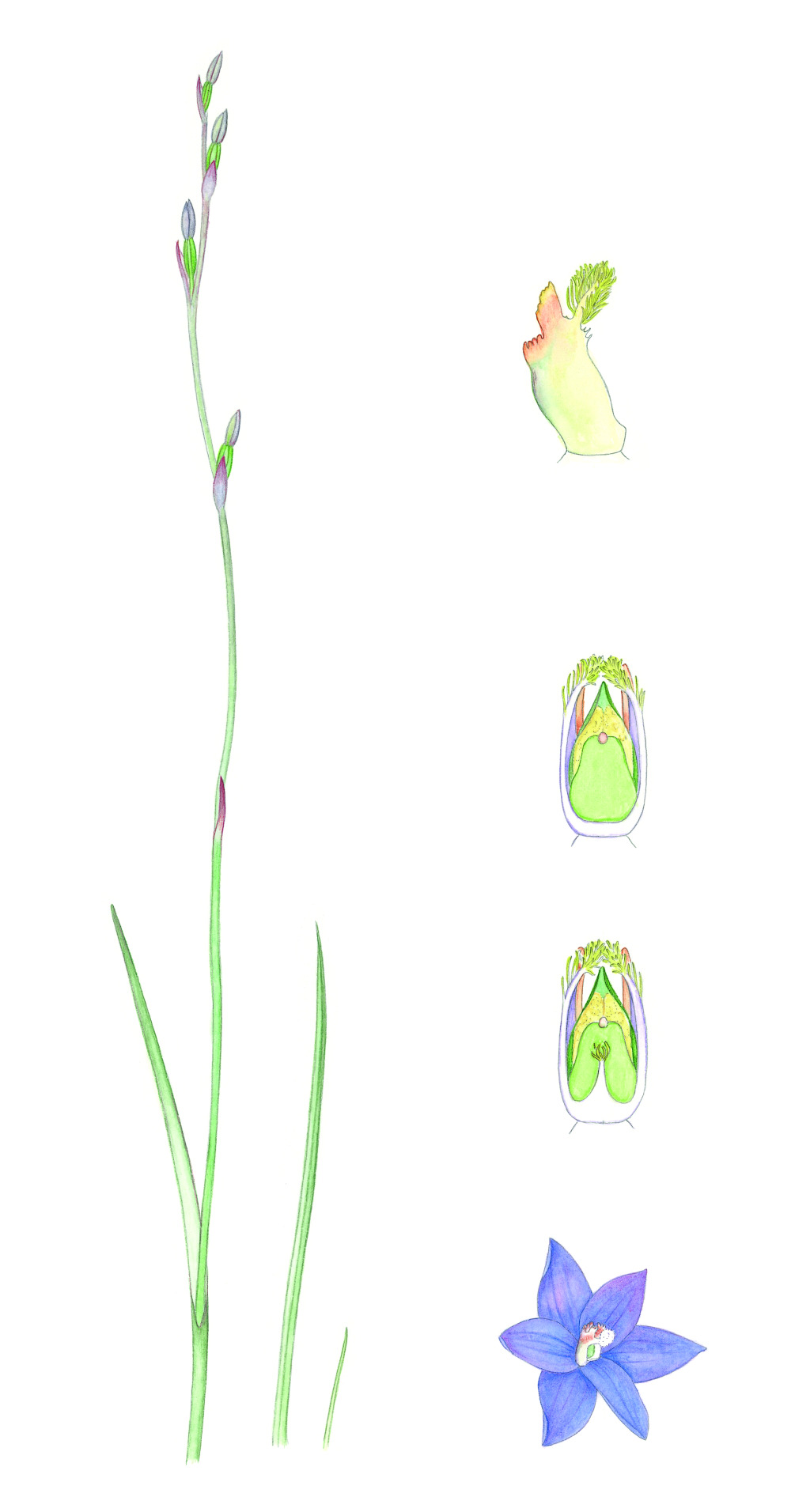Thelymitra circumsepta
W.Fitzg.Flowering stem erect, straight, slender to stout, 15–70 cm tall, 1–6 mm diam., pale green to purplish. Leaf linear-lanceolate to lanceolate, 10–45 cm long, 5–20 mm wide, thick, leathery, canaliculate, ribbed abaxially, sheathing at base, dark green, purplish at base. Inflorescence 1–20-flowered. Perianth segments ovate to lanceolate, 10–15(–21) mm long, usually blue to purplish, sometimes pink; sepals firmer than petals. Column 4–6 mm long, stout, pale blue or greenish; mid-lobe vestigial to very short, hardly hooding, usually salmon-pink, orange or reddish with a narrow purplish collar, apex irregularly and shallowly toothed or incised, grading to yellow; auxiliary lobes more or less parallel, quadrate, obliquely erect, toothed or fringed on the distal margin, yellow; lateral lobes converging, 1–1.5 mm long, digitiform, often somewhat compressed, obliquely erect, each with a shaggy toothbrush-like arrangement of yellow hairs on the distal margins, sometimes with a third staminode variously developed from the wing in front of the stigma. Anther inserted near apex of column, apex produced into a short beak. Flowers Nov.–Feb.
GipP, OtP, CVU, EGL, EGU, HSF, OtR, MonT, VAlp. Also SA, NSW, Tas. Found in open forest, woodlands or tall wet forest, usually in moist positions such as swamp margins, stream banks or sphagnum bogs in peaty sand, clay loams or rich mountain loams. Found from near sea-level to subalpine areas.
Flowers open tardily on hot, humid days and are almost obligately self–pollinating.
Thelymitra circumsepta is a widespread but vulnerable species.
The third front lobe appears sporadically, sometimes occurring in a single flower of a raceme. It is variously developed as a small lobe to a larger, penicillate, third column-arm, and appears to be a reversion to a more `regular' flower structure. This phenomenon has been observed in other species including T. rubra and members of the T. pauciflora/T. nuda complex.
Weber, J.Z.; Entwisle, T.J. (1994). Thelymitra. In: Walsh, N.G.; Entwisle, T.J., Flora of Victoria Vol. 2, Ferns and Allied Plants, Conifers and Monocotyledons, pp. 840–854. Inkata Press, Melbourne.
 Spinning
Spinning


